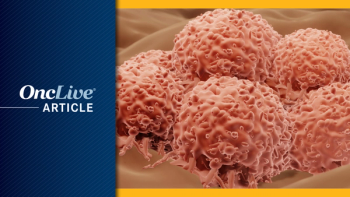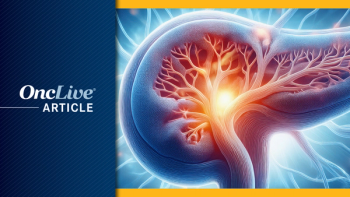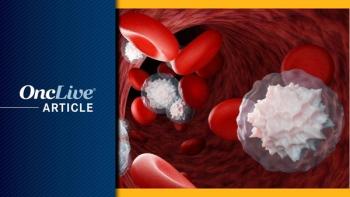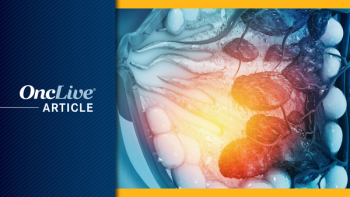
Cevidoplenib Elicits Platelet Responses in Persistent or Chronic Immune Thrombocytopenia
The novel SYK inhibitor cevidoplenib dosed at 400 mg twice per day led to robust platelet responses in patients with persistent or chronic primary immune thrombocytopenia who did not respond or relapsed after at least 1 prior therapy.
The novel SYK inhibitor cevidoplenib (SKI-O-703) dosed at 400 mg twice per day led to robust platelet responses in patients with persistent or chronic primary immune thrombocytopenia (ITP) who did not respond or relapsed after at least 1 prior therapy, according to data from a phase 2 trial (NCT04056195) presented at the 2023 EHA Congress.
Findings showed that among patients treated with 400 mg of cevidoplenib (n = 22), 64% experienced a platelet response, defined as a count of at least 30,000/µL and doubled their baseline total at any point during the treatment period without the use of rescue medication, compared with 33% of patients treated with placebo (n = 12; P = .151). Additionally, 46% of patients given 200 mg of cevidoplenib twice daily (n = 26) achieved a platelet response (P = .504), and 54% of all patients treated with cevidoplenib (n = 48) experienced a platelet response (P = .333).
“The results of this study warrant further clinical studies in a larger number of [patients] for an extended period to confirm durability of the clinical benefits [of cevidoplenib],” lead study author Jun-Ho Jang, MD, of the Division of Hematology Oncology at Samsung Medical Center in Seoul, South Korea, said in a presentation of the data.
Chronic ITP occurs in approximately 9.5 out of every 100,000 adults, leading to decreased blood counts, as well as excessive bruising, bleeding, fatigue, and an increased risk of thromboembolism.
Cevidoplenib is a highly selective SYK inhibitor that is designed to inhibit the downstream signaling of B-cell and Fc receptors while sparing T-cell and other cytokine-mediated inflammatory signals.
The multicenter, randomized, double-blind, placebo-controlled, phase 2 trial enrolled patients (n = 60) with primary ITP that was persistent or chronic. They were required to have relapsed or not responded to at least 1 prior therapy, and they needed to have a platelet count of less than 30,000/µL on 2 occasions at least 7 days apart. A confirmatory count was taken during screening.
Patients were randomly assigned 1:2:2 to receive placebo, 200 mg of cevidoplenib twice per day, or 400 mg of cevidoplenib twice per day for 12 weeks. Background medications included azathioprine, cyclosporine, mycophenolate mofetil, and corticosteroids.
Along with the primary end point of platelet count response, key secondary end points included the proportion of patients achieving at least 2 consecutive, prespecified platelet counts—at least 30,000/µL, 50,000/µL, and 100,000/µL—separated by at least 5 days and without use of rescue medication, as well as sustained platelet count response.
Among all enrolled patients, the median age was 60.0 years (range, 23-86), and the majority were female (56.7%). The median baseline platelet count was 8.5 x 109/L (range, 2-27). Most patients received at least 3 prior lines of therapy (68.3%) and had a baseline platelet count below 15,000/mL (68.3%). Additionally, 63.3% of patients were not responders to prior treatment, and 81.7% relapsed following prior treatment.
Additional data showed that 50% of patients in the 400-mg cohort experienced at least 2 consecutive platelet counts of at least 30,000/µL compared with 8% of patients given placebo (P = .015). This rate was 38% in the 200-mg cohort (P = .049). Forty-one percent of patients in the 400-mg arm achieved at least 2 platelet counts of at least 50,000/µL compared with 8% of the placebo group (P = .055). This rate was 19% in the 200-mg group (P = .371).
Furthermore, 27% of patients in the 400-mg arm had a platelet count of at least 50,000/µL in at least 4 of the final 6 visits, according to data from a post-hoc analysis. These rates were 19% for the 200-mg group and 0% for the placebo group.
Regarding safety, 66.7% of all patients treated with cevidoplenib experienced at least one any-grade adverse effect (AE) compared with 66.7% of patients given placebo. The rates of treatment-related AEs were 35.4% and 8.3%, respectively, and the rates of serious AEs were 4.2% and 25.0%, respectively. Treatment-related serious AEs occurred in 2.1% and 0% of patients, respectively.
Rates of grade 3/4 AEs were 14.6% for all patients in the cevidoplenib arms and 16.7% for those in the placebo arm; rates of treatment-related grade 3/4 AEs were 6.3% and 0%, respectively.
Rates of dose reduction/interruption and withdrawal were 12.5% and 4.2% in all cevidoplenib-treated patients, respectively. Those rates were 16.7% and 8.3%, respectively, with placebo. No deaths due to AEs were reported in either arm.
Reference
Jang JH, Grosicki D, Cheong JW, et al. Cevidoplenib, a selective inhibitor of spleen tyrosine kinase (SYK), in persistent and chronic immune thrombocytopenia (ITP): efficacy and safety in a multicenter, placebo controlled phase 2 study. Presented at: 2023 EHA Congress; June 8-15, 2023; Frankfurt, Germany. Abstract LBA2712.

























































































